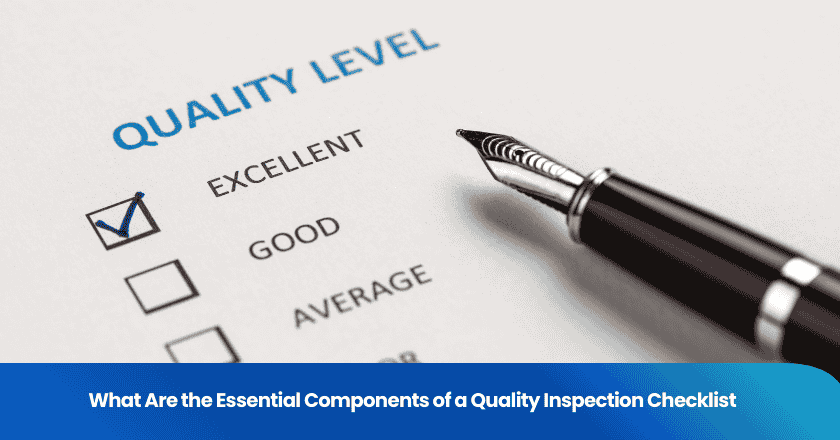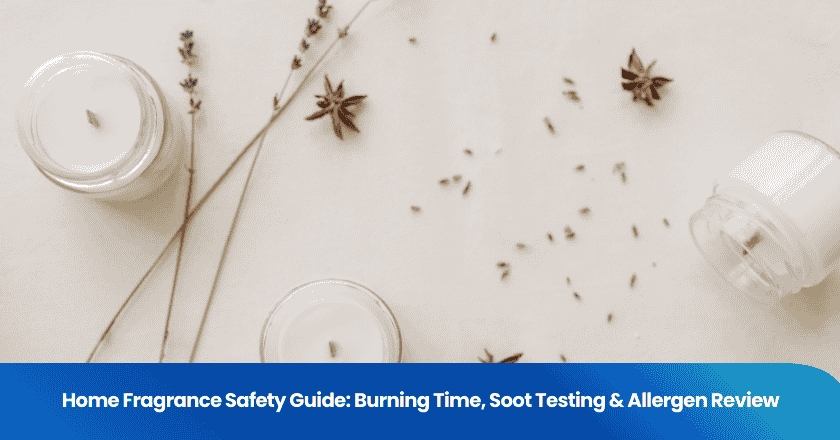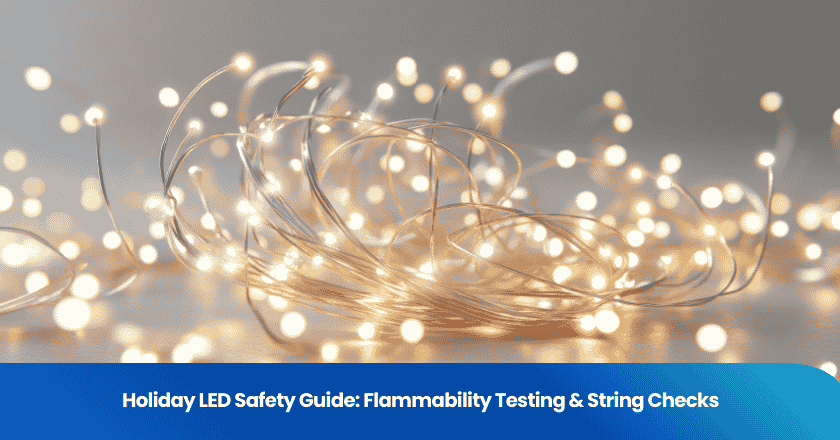
A quality inspection checklist includes several key components to help you maintain high standards.
General checks assess cleanliness, functionality, and compliance.
Product inspection checklist essentials cover product details, visual criteria, and measurement specs.
Defect identification pinpoints defect types, severity levels, and punch list items.
Manufacturing QC inspection checklist tracks incoming materials, process checks, and safety testing.
Checklist structure defines inspection criteria, pass/fail standards, and responsible personnel.
Clear organization and adaptability support your quality assurance efforts and ensure consistent results.
Key Takeaways
- A quality inspection checklist includes general checks, product details, defect identification, manufacturing controls, and clear structure to ensure consistent quality.
- Start inspections by checking cleanliness, equipment functionality, and compliance with standards to maintain safety and reliability.
- Record detailed product information, visual criteria, and measurements to track quality and support traceability.
- Classify defects by type and severity, then use a punch list to track and fix issues promptly.
- Keep your checklist updated, assign clear responsibilities, document results, and involve your team to improve quality control continuously.
General Checks
Cleanliness
You need to start every inspection by evaluating cleanliness. A clean environment sets the foundation for quality and safety. Dust, debris, and spills can affect product integrity and worker safety. Use a quality inspection checklist to specify areas that require cleaning, such as workstations, equipment surfaces, and storage zones.
- Create a list of cleaning tasks for each area.
- Assign responsibility for each task.
- Set measurable standards, like “no visible dust” or “floors free of spills.”
Tip: Use photos or diagrams to clarify expectations for cleanliness during inspection.
Functionality
Check that all equipment and tools operate as intended. Malfunctioning machinery can lead to defects and delays. Your quality inspection checklist should include tests for operational status, such as power checks, calibration, and basic function tests.
- Record the results of each inspection in a table for easy review.
- Note any issues and schedule repairs immediately.
- Confirm that safety features work properly.
| Equipment | Function Test | Result | Action Needed |
|---|---|---|---|
| Conveyor | Power On | Pass | None |
| Scale | Calibration | Fail | Repair |
Compliance
Verify that your processes and products meet regulatory and internal standards. Compliance checks protect your business from legal risks and ensure customer trust. Include specific regulations in your quality inspection checklist, such as safety codes, labeling requirements, and documentation standards.
- List each regulation or standard that applies.
- Mark items as compliant or non-compliant during inspection.
- Update your checklist when regulations change.
Note: Regularly review compliance requirements to keep your inspection process current.
A systematic approach to general checks helps you maintain consistent quality. Clear, measurable criteria in your quality inspection checklist make each inspection reliable and actionable.
Product Inspection Checklist Essentials
A well-structured product inspection checklist forms the backbone of effective product inspections. You need to focus on the details that matter most for your products. This section will guide you through the essentials: product details, visual criteria, and measurement and specs. Each part plays a critical role in ensuring your inspection process meets quality standards and supports traceability.
Product Details
Start every product inspection checklist by recording the basic product details. You should include the product name, model number, batch or lot number, and production date. These identifiers help you track each item through the inspection process and link findings to specific batches.
- List the product’s unique identifiers at the top of your checklist.
- Add fields for serial numbers or barcodes if your process requires them.
- Record the inspection date and the inspector’s name for accountability.
Tip: Use a table to organize product details for quick reference during inspection.
| Product Name | Model Number | Batch Number | Production Date | Inspector |
| Example A | X123 | B456 | 2024-06-01 | J. Smith |
Accurate product details make it easier to trace issues back to their source. This traceability supports corrective actions and continuous improvement in your product quality inspection process.
Visual Criteria
Visual inspection forms a major part of any product inspection checklist. You need to define what a good product looks like and what defects you want to avoid.
- List all visual attributes you expect, such as color, finish, labeling, and packaging.
- Describe acceptable and unacceptable conditions for each attribute.
- Use photos or diagrams to clarify standards and reduce subjectivity.
For example, your checklist might include:
- No scratches or dents on surfaces
- Consistent color and finish
- Labels applied straight and legible
- Packaging intact and sealed
Note: For a food product quality inspection checklist, visual checks might include color, texture, and packaging integrity.
Clear visual criteria help you maintain consistent quality standards across all product inspections. You can quickly spot deviations and document them for follow-up.
Measurement and Specs
You must verify that each product meets its required measurements and specifications. This step ensures that products function as intended and comply with customer or regulatory requirements.
- List all critical dimensions and tolerances in your product inspection checklist.
- Use calibrated tools to measure each attribute.
- Record the actual measurements next to the required specs.
| Attribute | Specified Value | Measured Value | Pass/Fail |
|---|---|---|---|
| Length | 10.0 cm ±0.1 | 10.02 cm | Pass |
| Weight | 500 g ±5 g | 498 g | Pass |
| Voltage Output | 12V ±0.2V | 12.1V | Pass |
Documenting these results provides a clear record for each inspection. You can trace any issues back to specific measurements, which supports root cause analysis and corrective action.
Always keep your product inspection checklist up to date with the latest specs and standards. Regular reviews ensure your inspection process stays relevant and effective.
A comprehensive product inspection checklist covers all essential details, visual criteria, and measurement standards. By documenting findings and linking them to specific products, you create a reliable system for traceability and continuous improvement. This approach strengthens your inspection process and helps you meet your quality standards every time.
Defect Identification
Identifying defects is a critical part of any inspection process. You need to recognize issues early to maintain quality and prevent costly mistakes. This section helps you organize defect data and prioritize corrective actions during product inspections.
Defect Types
You should classify defects to streamline your inspection workflow. Common defect types include cosmetic, functional, and structural issues. Cosmetic defects affect appearance, such as scratches or discoloration. Functional defects impact performance, like a device that fails to power on. Structural defects compromise integrity, such as cracks or broken components.
- Cosmetic: scratches, dents, misaligned labels
- Functional: non-operational buttons, faulty wiring
- Structural: broken parts, loose fittings
Tip: Use clear definitions for each defect type in your inspection checklist. This approach helps you train your team and ensures consistent product inspections.
Severity Levels
Assigning severity levels to defects allows you to prioritize repairs and manage risks. You can use a simple scale to rate each defect:
| Severity Level | Description | Action Required |
|---|---|---|
| Minor | Does not affect function | Monitor or fix later |
| Major | Impacts use or safety | Immediate action |
| Critical | Stops operation or unsafe | Reject product |
You should document severity levels during each inspection. This method helps you decide which defects need urgent attention and which can wait.
Punch List Items
A punch list records all defects found during product inspections. You use this list to track issues until you resolve them. Each punch list item should include a description, location, severity, and assigned personnel.
- Description of defect
- Location on product or process
- Severity level
- Responsible team member
Note: Review your punch list after every inspection. Regular updates ensure you address all defects and maintain high standards.
Defect identification strengthens your inspection process. You create a reliable system for tracking, prioritizing, and resolving issues during product inspections.
Manufacturing QC Inspection Checklist
A manufacturing qc inspection checklist helps you maintain high standards throughout your production process. You need to focus on three core areas: incoming materials, process checks, and safety and operational testing. Each area supports your overall quality control strategy and ensures that you catch issues before they affect your final product.
Incoming Materials
You start your quality control in manufacturing by inspecting incoming materials. Raw materials and components must meet your specifications before you use them in production. You check for defects, verify quantities, and confirm supplier documentation.
- Inspect each shipment for damage or contamination.
- Compare materials against purchase orders and specifications.
- Record batch numbers and supplier details for traceability.
- Use a checklist to note any discrepancies or quality issues.
| Material Name | Batch Number | Supplier | Condition | Quantity | Inspection Result |
|---|---|---|---|---|---|
| Steel Rods | B202406 | Supplier A | No rust | 500 pcs | Pass |
| Plastic Caps | C202406 | Supplier B | Cracked | 1000 pcs | Fail |
Tip: You improve your quality control by rejecting materials that do not meet your standards. This step prevents defects from entering your production line.
Process Checks
You monitor each stage of your manufacturing process to ensure consistent quality. Process checks help you identify problems early and maintain control over your operations.
- Verify machine settings and calibration before production starts.
- Inspect samples from each batch for defects or deviations.
- Document process parameters such as temperature, pressure, and speed.
- Record any adjustments or corrective actions taken during production.
| Process Step | Parameter | Standard Value | Actual Value | Inspection Result | Action Taken |
|---|---|---|---|---|---|
| Injection Molding | Temperature | 220°C | 218°C | Pass | None |
| Assembly | Torque | 5 Nm | 4.8 Nm | Pass | None |
You use these checks to maintain quality control and reduce the risk of defective products. Regular inspection keeps your process stable and predictable.
Safety and Operational Testing
You must ensure that your equipment and processes meet safety standards. Safety and operational testing protects your workers and your products.
- Test emergency stops and safety guards on all machines.
- Inspect electrical systems for proper grounding and insulation.
- Check ventilation and fire suppression systems.
- Record results and schedule repairs for any failures.
| Equipment | Safety Feature | Test Result | Action Needed |
|---|---|---|---|
| Conveyor Belt | Emergency Stop | Pass | None |
| Press Machine | Safety Guard | Fail | Repair |
Note: You strengthen your quality control by performing safety tests regularly. This practice reduces accidents and ensures compliance with regulations.
A comprehensive manufacturing qc inspection checklist covers every step from incoming materials to final safety checks. You create a reliable system for quality control in manufacturing by documenting inspections, tracking issues, and taking corrective action. This approach helps you deliver safe, high-quality products every time.
Quality Control Checklist Structure
A well-organized quality control checklist forms the backbone of your inspection process. You need to define clear inspection criteria, set pass/fail standards, and assign responsible personnel. These elements help you maintain effective quality control and meet your quality standards every time.
Inspection Criteria
You should start by listing specific inspection criteria for each product or process. These criteria guide your team and ensure consistency in every inspection.
- Identify the most important features or steps that impact quality.
- Break down each step into measurable points.
- Use simple language so everyone understands what to check.
Tip: Review your inspection criteria regularly. Update them as your products or processes change to keep your quality control checklist relevant.
Pass/Fail Standards
You need to set clear pass/fail standards for each inspection point. These standards help you decide if a product or process meets your quality standards.
- Define what counts as a pass or fail for each criterion.
- Use numbers, ranges, or visual examples when possible.
- Record results in a table for easy tracking.
| Inspection Point | Standard | Pass/Fail |
|---|---|---|
| Surface Finish | No scratches | Pass |
| Weight | 500g ± 5g | Pass |
| Label Placement | Centered, straight | Fail |
Clear pass/fail standards support effective quality control measures and reduce confusion during inspection.
Responsible Personnel
Assigning responsibility ensures accountability in your quality control process. You should list who will perform each inspection and who will review the results.
- Assign tasks based on skill and training.
- Record names or roles next to each inspection point.
- Encourage team members to sign off after completing their checks.
Note: Involving your team in the quality control checklist process builds ownership and improves results.
A structured quality control checklist helps you apply quality control measures consistently. You create a reliable system for inspection, decision-making, and continuous improvement. This approach supports an effective quality control checklist and helps you meet your quality standards.
Effective QC Inspection Checklist Practices
Documentation
You need to document every step of your inspection process. Accurate records form the backbone of any quality control checklist. When you record inspection results, you create a clear trail for audits and future reviews. Use tables, checklists, or digital forms to capture data. Make sure you include dates, inspector names, and specific findings. This practice helps you track trends and identify recurring issues.
Tip: Store your quality control checklist records in a secure, organized system. Quick access to past inspections supports fast decision-making and continuous improvement.
Reporting
You should communicate inspection results clearly and promptly. An effective qc inspection checklist loses value if you do not share findings with your team. Use summary reports to highlight key issues, pass/fail rates, and corrective actions. Visual aids like charts or graphs can make trends easy to spot.
- Share reports with supervisors and relevant departments.
- Schedule regular meetings to discuss quality control checklist outcomes.
- Encourage feedback to improve your inspection process.
Clear reporting ensures everyone understands the current state of quality control. You build trust and accountability across your organization.
Updates and Collaboration
You must keep your quality control checklist up to date. Regulations, product requirements, and processes change over time. Regular reviews help you maintain an effective quality control checklist. Involve your team in these updates.
- Ask inspectors and operators for suggestions.
- Review the product inspection checklist after major changes or incidents.
- Test new checklist items before full implementation.
Collaboration leads to a more effective qc inspection checklist. When you involve your team, you gain practical insights and boost engagement.
Note: Continuous improvement in your quality control checklist ensures your quality control system remains strong and adaptable.
A well-structured quality inspection checklist helps you achieve consistent quality control and compliance. You improve your processes by reviewing and updating your quality control checklist regularly. Collaboration with your team supports ongoing quality control and strengthens your quality assurance efforts.
You build a reliable system when you focus on clear criteria and continuous improvement. Set high quality standards and encourage everyone to participate in maintaining them.
FAQ
What is the main purpose of a quality inspection checklist?
You use a quality inspection checklist to ensure every product or process meets your standards. This tool helps you track compliance, identify defects, and maintain consistency across inspections.
How often should you update your inspection checklist?
You should review and update your checklist regularly. Changes in regulations, product design, or customer requirements may require updates.
Tip: Schedule a checklist review after any major process change.
Who should complete the inspection checklist?
Assign trained personnel to complete the checklist. You improve accuracy and accountability by having responsible team members sign off on each inspection point.
Can you use a checklist for construction quality control inspection checklist needs?
Yes, you can adapt a checklist for construction quality control inspection checklist requirements. List specific criteria for materials, workmanship, and safety to ensure compliance on every project.
What should you do if you find a defect during inspection?
Record the defect on your checklist. Assign responsibility for corrective action.
| Step | Action |
|---|---|
| Identify | Note the defect |
| Assign | Choose a person |
| Resolve | Fix the issue |
Grow your business with TradeAider Service
Click the button below to directly enter the TradeAider Service System. The simple steps from booking and payment to receiving reports are easy to operate.



